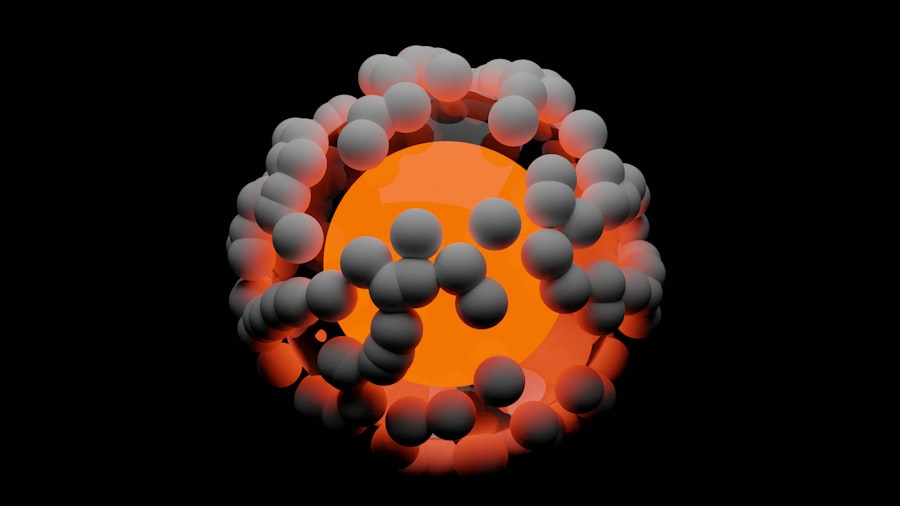When I first encountered the concept of Atomic Design, I was intrigued by its systematic approach to creating user interfaces. Coined by Brad Frost, Atomic Design is a methodology that breaks down the components of a user interface into five distinct levels: atoms, molecules, organisms, templates, and pages. This hierarchical structure allows designers and developers to create more cohesive and reusable components, ultimately leading to a more efficient workflow.
Atoms are the smallest building blocks, such as buttons or input fields, while molecules are combinations of atoms that form functional groups, like a search form. Organisms are more complex structures made up of groups of molecules and atoms, such as a navigation bar. Templates and pages represent the layout and final design of the interface, respectively.
As I delved deeper into Atomic Design, I began to appreciate its emphasis on modularity and reusability. By breaking down interfaces into smaller components, I found that I could focus on each element individually, ensuring that every piece was well-designed and functional. This approach not only streamlined my design process but also fostered a greater understanding of how each component interacts within the larger system.
The clarity provided by this methodology has been invaluable in my work, allowing me to create more intuitive and user-friendly designs.
Key Takeaways
- Atomic design is a methodology for creating design systems by breaking down UI elements into smaller components.
- Atomic design is important in web development as it promotes reusability, scalability, and consistency in design and development.
- The core principles of atomic design include atoms, molecules, organisms, templates, and pages, which help in creating a systematic approach to design and development.
- Implementing atomic design in web development involves creating a library of UI components, using a modular approach, and following a consistent naming convention.
- The benefits of atomic design in web development include faster development, easier maintenance, improved collaboration, and better user experience.
The Importance of Atomic Design in Web Development
In the fast-paced world of web development, efficiency and consistency are paramount. I have come to realize that Atomic Design plays a crucial role in achieving these goals. By providing a clear framework for organizing design elements, it allows teams to collaborate more effectively.
When everyone understands the terminology and structure of Atomic Design, communication becomes smoother, reducing the likelihood of misunderstandings or misaligned expectations. This clarity is especially beneficial in larger teams where multiple designers and developers are working on different aspects of a project simultaneously. Moreover, the importance of Atomic Design extends beyond just team collaboration; it also enhances the user experience.
By creating a consistent visual language across all components, users can navigate interfaces with greater ease. I have noticed that when I apply Atomic Design principles, the end product feels more cohesive and polished. This consistency not only improves usability but also strengthens brand identity, as users begin to associate specific design elements with a particular brand or service.
The Core Principles of Atomic Design

At the heart of Atomic Design are several core principles that guide its implementation. One of the most significant principles is the idea of hierarchy. Each level of Atomic Design builds upon the previous one, creating a structured approach to design that is both logical and intuitive.
This hierarchy allows me to focus on individual components while keeping the bigger picture in mind. By understanding how atoms contribute to molecules and how those molecules form organisms, I can create designs that are not only visually appealing but also functionally sound. Another essential principle is reusability.
In my experience, one of the most time-consuming aspects of web development is creating similar components from scratch for different projects. Atomic Design encourages me to create reusable components that can be easily adapted for various contexts. This not only saves time but also ensures consistency across different projects.
Additionally, reusability fosters a sense of ownership over design elements, as I can refine and improve them over time, leading to better overall quality.
Implementing Atomic Design in Web Development
Implementing Atomic Design in my web development projects has been a transformative experience. The first step I take is to conduct an inventory of existing design elements. This involves identifying all the components currently in use and categorizing them according to the Atomic Design hierarchy.
By doing this, I can pinpoint areas where components can be reused or improved upon. It also helps me identify any gaps in my design system that need to be filled. Once I have a clear inventory, I begin creating a style guide or design system that outlines each component’s specifications.
This guide serves as a reference for both myself and my team, ensuring that everyone is on the same page regarding design standards. As I develop new components, I make it a point to adhere to the established guidelines, which helps maintain consistency throughout the project. Additionally, I find it beneficial to use design tools that support Atomic Design principles, such as Figma or Sketch, which allow for easy component creation and management.
The Benefits of Atomic Design in Web Development
The benefits of adopting Atomic Design in web development are numerous and far-reaching. One of the most significant advantages I’ve experienced is increased efficiency in my workflow. By breaking down complex interfaces into smaller components, I can work on multiple elements simultaneously without losing sight of how they fit together.
This modular approach allows me to iterate quickly and make changes without having to overhaul entire sections of a project. Another key benefit is improved collaboration among team members. With a shared understanding of Atomic Design principles, designers and developers can communicate more effectively about their work.
This collaboration fosters a sense of teamwork and encourages creative problem-solving as we work together to refine components and ensure they meet user needs. Ultimately, this leads to higher-quality products that are better aligned with user expectations.
Best Practices for Using Atomic Design

As I have navigated the world of Atomic Design, I’ve discovered several best practices that have enhanced my implementation of this methodology. First and foremost is the importance of documentation. Keeping thorough records of each component’s specifications, usage guidelines, and variations ensures that everyone on the team can access the information they need when working on a project.
This documentation serves as a living resource that can evolve alongside our design system. Another best practice is to prioritize accessibility when designing components. As I create atoms and molecules, I make it a point to consider how they will be used by individuals with varying abilities.
This includes ensuring proper color contrast, providing alternative text for images, and designing interactive elements that are easy to navigate using assistive technologies. By incorporating accessibility from the outset, I can create more inclusive designs that cater to a broader audience.
Case Studies of Atomic Design in Action
To truly appreciate the impact of Atomic Design, I find it helpful to examine real-world case studies where this methodology has been successfully implemented. One notable example is the design system created by IBM called “Carbon.” Carbon utilizes Atomic Design principles to create a comprehensive library of reusable components that can be used across various IBM products. By standardizing their design elements, IBM has improved consistency across their platforms while also streamlining their development process.
Another inspiring case study is that of Salesforce’s Lightning Design System (LDS). By adopting Atomic Design principles, Salesforce has created a robust library of UI components that developers can easily integrate into their applications. This approach has not only enhanced the user experience but has also empowered developers by providing them with the tools they need to create high-quality applications quickly and efficiently.
The Future of Atomic Design in Web Development
As I look toward the future of web development, I am excited about the continued evolution of Atomic Design and its potential impact on our industry. With advancements in technology and design tools, I anticipate that we will see even more sophisticated implementations of this methodology. For instance, as artificial intelligence becomes increasingly integrated into design processes, I envision tools that can automatically generate components based on established Atomic Design principles.
Moreover, as user expectations continue to evolve, I believe that Atomic Design will play a crucial role in helping designers create adaptable interfaces that respond to changing needs. The emphasis on modularity and reusability will allow us to pivot quickly in response to user feedback or emerging trends without sacrificing quality or consistency. In conclusion, my journey with Atomic Design has been both enlightening and rewarding.
By embracing its principles and practices, I have been able to enhance my web development projects significantly while fostering collaboration within my team. As we move forward into an ever-changing digital landscape, I am confident that Atomic Design will remain a vital framework for creating effective and engaging user interfaces.
In the realm of web development, the concept of Atomic Design has revolutionized how developers approach building user interfaces. This methodology, which breaks down a website into its smallest components, allows for more efficient and scalable design systems. A related article that complements the principles of Atomic Design is the one on Google PageSpeed Insights. This article delves into optimizing web performance, which is crucial when implementing Atomic Design, as it ensures that each component not only looks good but also performs efficiently. By understanding how to enhance page speed, developers can create more responsive and user-friendly websites, aligning perfectly with the goals of Atomic Design.
FAQs
What are the principles of atomic design in web development?
Atomic design in web development is a methodology that breaks down design elements into their smallest parts, called atoms, and then combines them to form larger components and ultimately complete interfaces. The five principles of atomic design are atoms, molecules, organisms, templates, and pages.
What are atoms in atomic design?
Atoms are the basic building blocks of atomic design. They are the smallest elements such as buttons, inputs, labels, and other individual elements that cannot be broken down further.
What are molecules in atomic design?
Molecules are groups of atoms bonded together. They form simple components like a search bar, a form, or a navigation menu.
What are organisms in atomic design?
Organisms are more complex components that are made up of groups of molecules and/or atoms. Examples include a header, a card, or a sidebar.
What are templates in atomic design?
Templates are combinations of organisms that form a complete section of a website, such as a blog post or a product page.
What are pages in atomic design?
Pages are specific instances of templates that show what a user will see when they visit a particular URL. They are the final stage of the atomic design process.
